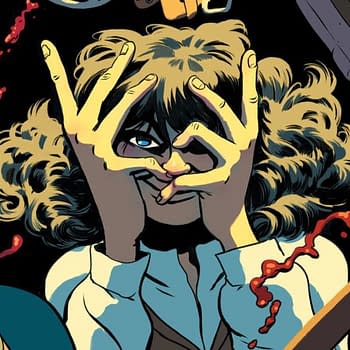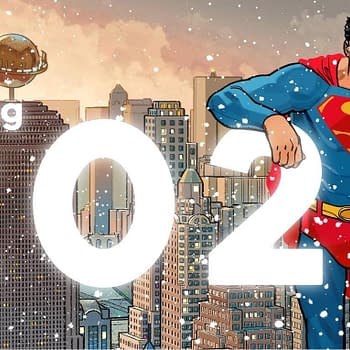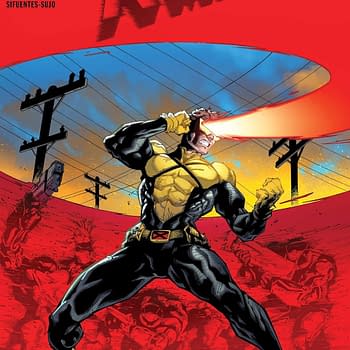Posted in: Comics | Tagged: Alan Moore, don simpson, fantagraphics, in pictopia
Publish An Alan Moore Comic Without Saying It's An Alan Moore Comic
It's not the first time this has happened. Marvel Comics agreed with Alan Moore to republish his Marvelman comics as Miracleman, without crediting him. Instead, the book is credited to The Original Writer. While DC Comics agreed to remove his name from adaptations of V for Vendetta and Watchmen, crediting them to being based on comics by David Lloyd and Dave Gibbons instead.
This was down to issues Alan Moore had with both publishers, but also work he feels has been repurposed away from his original intentions or ownership, or work that he no longer feels personally connected with.
Why this would be the case with In Pictopia, his short comic book story with Don Simpson is unknown. It originally appeared in Anything Goes! #2 in 1986, a comic published by Fantagraphics to raise money to help pay the costs of The Comics Journal from a libel lawsuit brought on by Michael Fleisher.
It is a true gem. A story about a comic book character living in a city full of other comic book characters, having to deal with a new reality that is tearing down everything he once held dear. A parable and allegory for both comic book storytelling, and society and culture in general, it would also inform future works by Alan Moore such as Top Ten.

And now Fantagraphics is republishing the story as an oversized book. But without mentioning much. In Pictopia is listed on Amazon with very few details. Diamond and Fantagraphics have a few more but both skirt around the authorship.
In Pictopia is the legendary comic created in 1986, written by the era's most adventurous mainstream comics writer and drawn by a bevy of indie cartoonists—helmed by Don Simpson, with Mike Kazaleh, Pete Poplaski, and Eric Vincent. Presented here for the first time, scanned from the original line art and full-color painted boards, in an appropriately oversized format. Pictopia is the allegorical city inhabited by old, forgotten, but once famous and iconic comics characters, now considered pitiable has-beens by the popular new comics characters who are cheerfully and inevitably taking their places in the pop culture pantheon of celebrity. It is both a paean to timeless, beloved comics characters and a scathing critique of the then-contemporary comics sub-culture.
And that's how you publish an Alan Moore comic book without saying it's an Alan Moore comic.












